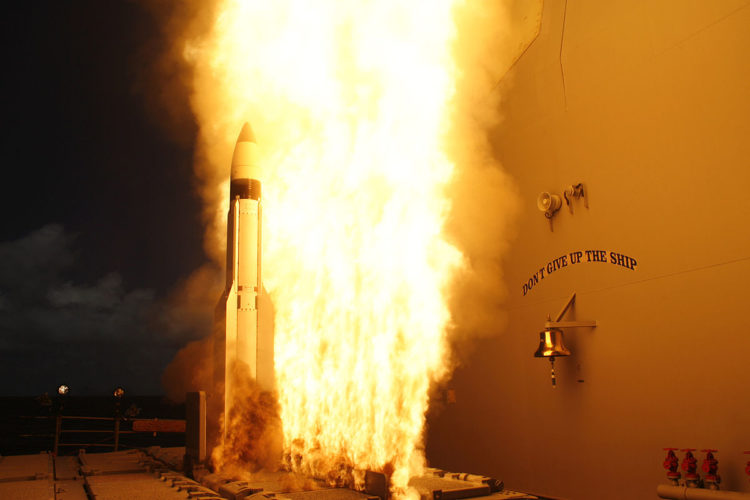Author: Zvedre, Y. K.
Published in National Security Journal, 09 July 2020
space and on celestial bodies were to be carried out in accordance with international law, including the United Nations Charter, in the interest of maintaining international peace and security and promoting international cooperation and understanding. As time passed, all subsequent treaties relating to international space law included most of the principles set out in this Declaration.27

A Standard Missile-3 (SM-3) is launched from the guided missile cruiser USS Lake Erie during a joint Missile Defense Agency, U.S. Navy ballistic missile flight test. Source: US Navy/Wikimedia Commons.
The most significant international agreement was the 1967 Treaty on Principles Governing the Activities of States in the Exploration and Use of Outer Space, including the Moon and Other Celestial Bodies, or Outer Space Treaty. This became a kind of “space constitution,” governing peaceful space activities of all nations, providing the general legal basis and a framework for further development of “space law.”
According to Article 4 of the 1967 Treaty, the Parties undertake “not to place in orbit any objects carrying nuclear weapons or any other kinds of weapons of mass destruction, install such weapons on celestial bodies, or station such weapons in outer space in any other manner.” It states that “the Moon and other celestial bodies shall be used by all States Parties
